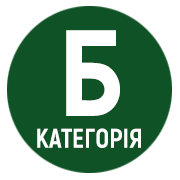NONUNIFORMITY OF THINKING: CONCEPTUAL PROVISIONS OF THE PROBLEM
DOI:
https://doi.org/10.32782/psy-2023-1-4Keywords:
thinking, meaning, illogicality, paraphrase, formal logicAbstract
Thinking as a neuropsychological process is characterized by nonuniformity and non-linearity of the course. The thinking process has such characteristics due to its incomplete identity with the operations of formal logic. The thinking process regularly and discretely goes beyond the rules of formal logic.Such phenomena as paraphrase (semantic repetitions), illogicality (contradiction) and semantic vagueness of thought are the main forms of deviations from the rules of formal logic. In order to empirically confirm this provision, we have planned a study based on the research of the correspondence of the author's text narratives and their understanding by the participants of the study. For this purpose, the participants were offered a text of a completed fiction story consisting of thirty sentences where all paired sentences were omitted. In such a way, a high level of information uncertainty has been modeled, within which the participants are trying to create a certain meaningful product. It is assumed that the meaning of the story can be varied. The results of the study showed that the process of text completion (creation of fifteen paired sentences) with regard to the semantic aspect mostly happens extremely non-uniformly. The participants (n=61) demonstrate a wide range of semantic indicators. The level of variability and ranging of semantic indicators is too high. We believe that this indicates the nonuniformity of the thinking process. The uniformity of the thinking process was characteristic of only 4% of the participants. It was determined that the uniformity of thinking usually produces a relatively higher level of general meaning of the test story. At the same time, there is a justification of assumptions that deviations from the rules of formal logic due to the phenomena of paraphrase, illogicality and semantic vagueness become the basis for creativity and serve the tasks of creating an original narrative.
References
Карпенко В. В. Психологія мислення: феноменологія, процес і детермінанти. Науковий вісник Львівського державного університету внутрішніх справ. 2013. № 1. С. 32–42. Режим доступу: https://dspace.lvduvs.edu.ua/handle/1234567890/1254.
Adams R. A., Vincent P., Benrimoh D., Friston K. J., Parr T. Everything is connected: Inference and attractors in delusions. Schizophrenia Research. 2022. Vol. 245. Р. 5–22. https://doi.org/10.1016/j.schres.2021.07.032.
Ashinoff B. K., Singletary N. M., Baker S. C., Horga G. Rethinking delusions: A selective review of delusion research through a computational lens. Schizophrenia Research. 2022. Vol. 245 . Р. 23–41. https://doi.org/10.1016/j.schres.2021.01.023.
Erdmann T., Mathys C. A generative framework for the study of delusions. Schizophrenia Research. 2022. Vol. 245 . Р. 42–49. https://doi.org/10.1016/j.schres.2020.11.048.
Said-Metwaly S., Taylor C. L., Camarda A., Barbot B. Divergent thinking and creative achievement. How strong is the link? An updated meta-analysis. Psychology of Aesthetics, Creativity, and the Arts. 2022. Jun 30. https://doi.org/10.1037/aca0000378.
Stamatis C. A., Amy W. A latent profile analysis of creativity: Associations of convergent and divergent thinking with subclinical schizotypal, obsessive-compulsive, and affective symptoms. Psychology of Aesthetics, Creativity, and the Arts. 2022. Vol 16(4). Р. 651–664. http://dx.doi.org/10.1037/aca0000378.
Wigert B. G., Murugavel V. R., Reiter-Palmon R. The utility of divergent and convergent thinking in the problem construction processes during creative problem-solving. Psychology of Aesthetics, Creativity, and the Arts. 2022. Aug 29. https://orcid.org/0000-0001-8259-4516.
Мазяр О. В. Особистісний дисонанс: системний аналіз : монографія. Житомир : Видавець О. О. Євенок, 2020. 332 с. http://eprints.zu.edu.ua/id/eprint/31583.
Мазяр О. В. Смислова імітаційність у процесі мислення. Проблеми гуманітарних наук. Психологія. 2023. № 51. С. 76–81. https://doi.org/10.32782/2312-8437.51.2023-1.
Мазяр О. «Методика текстуальних розривів» як метод вивчення процесуальних характеристик мислення. Функціонування творчого мислення в умовах інформаційної невизначеності: матеріали ХХІІІ Всеукраїнської науково-практичної конференції, 30 травня 2023 року / за ред. В. О. Моляко. Київ : Інститут психології імені Г. С. Костюка НАПН України, 2023. С. 67–69. Режим доступу: http://eprints.zu.edu.ua/id/eprint/37131.
Мазяр О. Інформаційна невизначеність як умова творчого процесу. Функціонування творчого мислення в умовах інформаційної невизначеності : матеріали ХХІІ Всеукраїнської науково-практичної конференції, 24 травня 2022 року / за ред. В. О. Моляко. Київ: Інститут психології імені Г.С. Костюка НАПН України, 2022. С. 141–146. Режим доступу: http://eprints.zu.edu.ua/id/eprint/34101.






